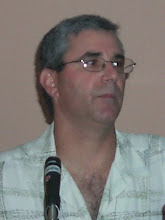COST ESTIMATING GARMENTS
We often receive phone calls inquiring as to how much a private label garment may cost. When I hedge a bit and mention we need specific information to begin a costing process I am confronted with "oh, just give me a ballpark guess". I know my mission is to assist any and all that may call with as much helpfull advise as possible, so I take a deep breath and begin the 20 minute conversation on why guessing at garment cost is less accurate than weather forecasting. For those that don't mind reading, I offer some insights here.
For costing a domestic garment we must know the specific fabric we are using. Fabric comprises 45-55% of a garments cost (in general). Fabric weight (yield) is essential to know, as all fabric costing is done by weight. We buy pounds of yarn, knt by the pound and dye by the pound. It is only when the fabric is finished that yards are measured. The more a fabric weighs, the more it costs per yard. We also have to know the fabric content. 100% carded cotton costs less than combed cotton which costs less than pima and organic cotton. Bamboo, modal, spandex etc all are more expensive than cotton. The fabric color is also important. White is least expensive and the darker a fabric color the costlier it becomes. Dark color also affects yield, so the fabric may gain 3-5% in yield from a light yellow to a deep forest green. The fabric shrinkage is also a critical factor, as we have to build in the shrinkage to insure proper after wash dimensions. A fabric that shrinks 4% more in length than another fabric will typically use 4% more fabric. Finally, fabric finished width is crucial, as it should be obvious that a garment with a 33" sweep won't fit on a 31" tubular fabric and where three 20" wide panels may fit across a 61" fabric they will not across a 59" fabric. Now, knowing all of this, how on earth can I respond to a question like "I have a kimono and need a price so I can write my business plan".
Once we get past the fabric we have to look at garment construction. I can't see the garment over the telephone. Does it have neck tape? Are the seams clean finished? Is there fusing or interfacing? Is it three needle merrow or safety stitch? Is the V mitered or pinched? Is it to be made in size 5XL? Combine these unknowns with the fabric unknowns and tell me how to guess. Tossing a Hail Mary price in the air to make a sale is simply not in my nature!
The best way to guess at a cost is to find comparable garments in the market at retail. Work backwards, knowing the retailer marks up 100-125%. Take that number and reduce it by the margin you are planning to make to see where you would need to be. A normal margin is 40-60%, depending on your business model and overhead.
Costing custom private label apparel is a tedious and time consuming job. An appreciation for what has to go into these costings will be an asset to those who take the time to understand and recognize the variables.

